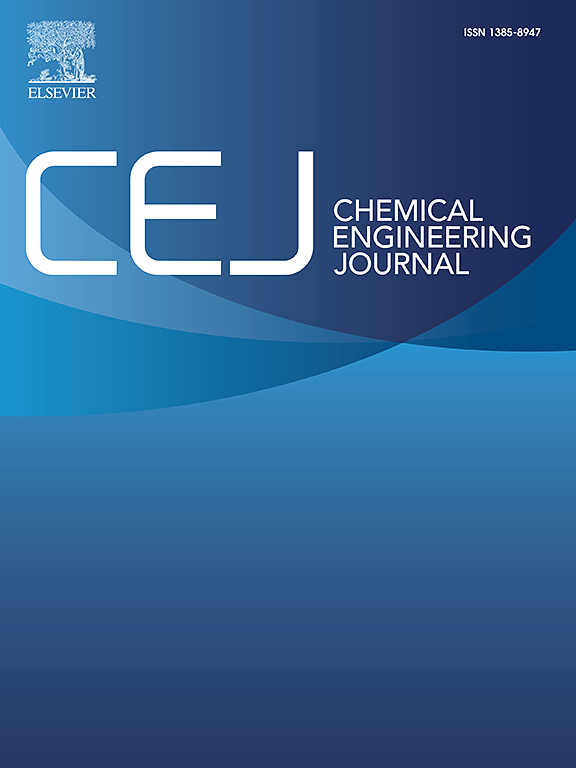Simultaneous construction of Zr-β zeolite with high content and high accessibility of framework Zr sites in the conversion of ethanol to 1,3-butadiene: Mechanisms and synergistic effects
IF 13.3
1区 工程技术
Q1 ENGINEERING, CHEMICAL
引用次数: 0
Abstract
Metallosilicate zeolites, represented by Zr-β zeolite, possess unique porosity and tunable acidity, showing great potential in the conversion of ethanol to 1,3-butadiene. However, there still remains potential for further improvement of catalytic activity and stability by breaking the bottleneck framework metal site content and microporosity diffusion. In this paper, a novel Zr-β zeolite with both high content and high accessibility of framework Zr sites was successfully synthesized via the combination strategy of “Improved Decomposition Reconstruction” and “Silanization.” Based on the activity evaluation experiments of key reaction steps and in situ DRIFTS in the conversion of ethanol to 1,3-butadiene, the enhanced activity and stability are due to the synergistic effects of the content and accessibility of framework Zr sites, which both facilitate reactant conversion and inhibit the covering of active sites or the plugging of pore channels by polymerized heavy compounds. The prepared zeolite demonstrates excellent performance with a total conversion of 66% and a 1,3-butadiene selectivity above 67% in 100 h, along with good regenerability.

在乙醇转化为 1,3-丁二烯的过程中,同时构建具有高含量和高框架 Zr 位点可达性的 Zr-β 沸石:机理与协同效应
以 Zr-β 沸石为代表的金属硅酸盐沸石具有独特的孔隙率和可调酸度,在乙醇转化为 1,3-丁二烯的过程中显示出巨大的潜力。然而,通过打破金属位点含量和微孔扩散的瓶颈框架,进一步提高催化活性和稳定性的潜力仍然存在。本文通过 "改进分解重构 "和 "硅烷化 "相结合的策略,成功合成了一种新型 Zr-β 沸石,其框架 Zr 位点含量高且易获得。根据乙醇转化为 1,3-丁二烯过程中关键反应步骤的活性评价实验和原位 DRIFTS 分析,活性和稳定性的提高是由于框架 Zr 位点的含量和可及性的协同作用,既促进了反应物的转化,又抑制了活性位点的覆盖或聚合重化合物对孔道的堵塞。所制备的沸石性能卓越,100 小时内的总转化率达 66%,1,3-丁二烯选择性超过 67%,而且具有良好的可再生性。
本文章由计算机程序翻译,如有差异,请以英文原文为准。
求助全文
约1分钟内获得全文
求助全文
来源期刊

Chemical Engineering Journal
工程技术-工程:化工
CiteScore
21.70
自引率
9.30%
发文量
6781
审稿时长
2.4 months
期刊介绍:
The Chemical Engineering Journal is an international research journal that invites contributions of original and novel fundamental research. It aims to provide an international platform for presenting original fundamental research, interpretative reviews, and discussions on new developments in chemical engineering. The journal welcomes papers that describe novel theory and its practical application, as well as those that demonstrate the transfer of techniques from other disciplines. It also welcomes reports on carefully conducted experimental work that is soundly interpreted. The main focus of the journal is on original and rigorous research results that have broad significance. The Catalysis section within the Chemical Engineering Journal focuses specifically on Experimental and Theoretical studies in the fields of heterogeneous catalysis, molecular catalysis, and biocatalysis. These studies have industrial impact on various sectors such as chemicals, energy, materials, foods, healthcare, and environmental protection.
 求助内容:
求助内容: 应助结果提醒方式:
应助结果提醒方式:


